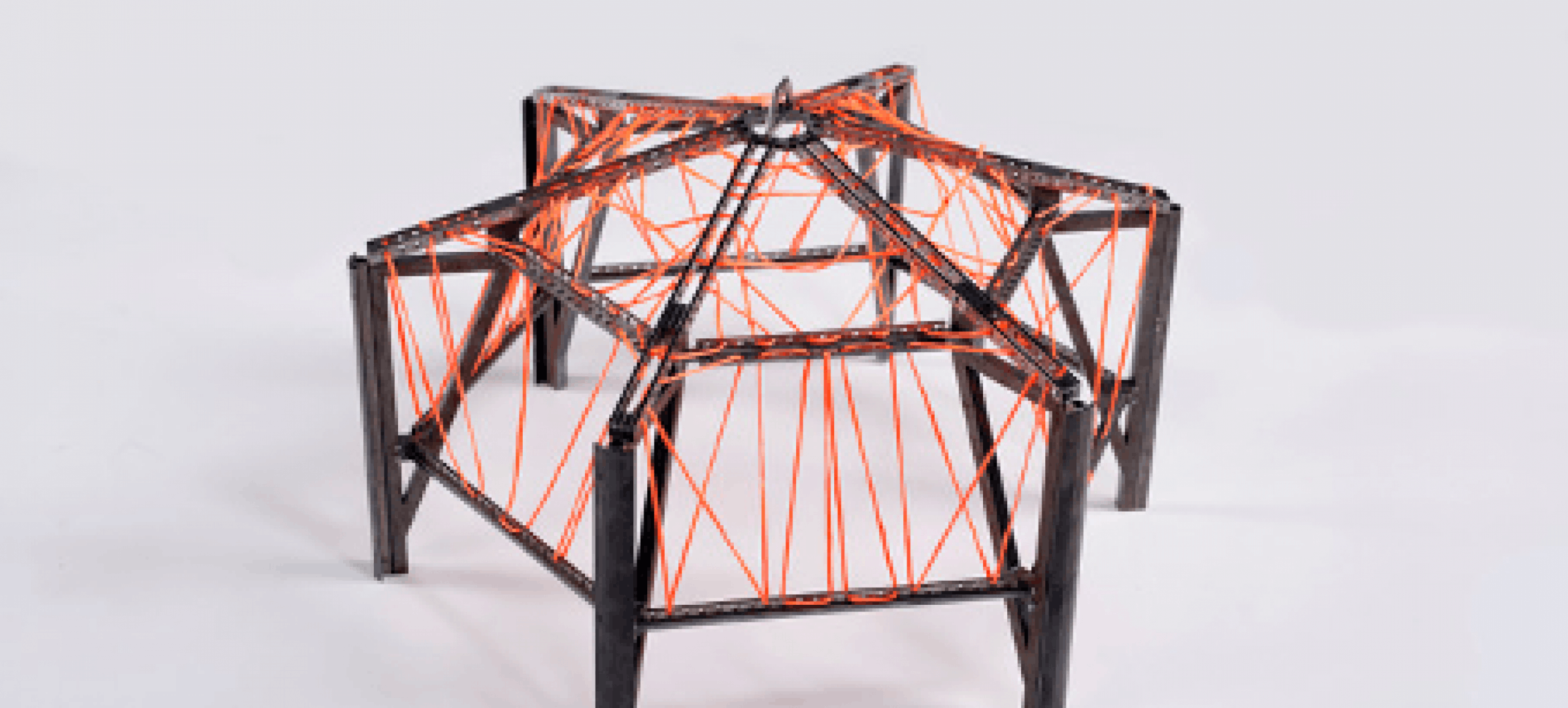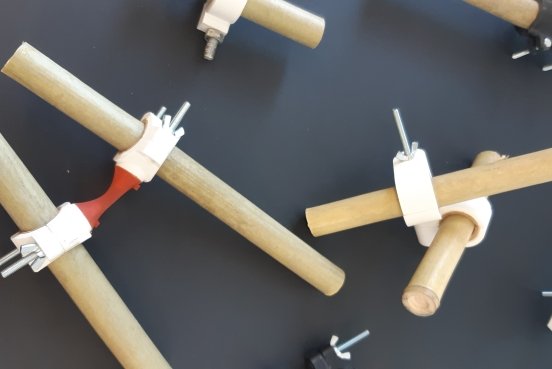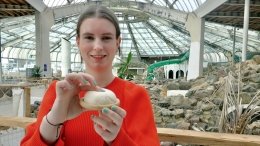Maxim Robbe Dijkstra, 1/5, blogger ArtEZ Business Centre
My name is Maxim Robbe Dijkstra, 25 years old and in July 2018 I graduated from Product Design at ArtEZ in Arnhem. I have developed myself as a designer who puts nature and the constantly changing world at the center of my work. In my process I work together with different parties such as scientists and craftsmen to raise the project to the highest possible quality. For my graduation collection I designed practical solutions for 2 current problems within our natural world.

Which project did you graduate with and can you explain them?
My graduation collection is called “AQUATIC BIOTECTURE”. The collection consists of two projects: The coral mandala and the fish hotel. For the development of both projects, I collaborated with Professor Tinka Murk and Professor Ronald Osinga from the Marine Animal Ecology Group at Wageningen University. Both projects respond to current problems caused by humans that the natural world is struggling with.
Huge amounts of coral are dying worldwide due to the effects of global warming and oceanic pollution. The most common cause of coral death is coral bleaching. The cause of “coral bleaching” is large amounts of water that are too warm or too polluted. These “bleaching events” travel through the major oceanic currents around the world.
The coral mandala is designed to solve the problem of coral bleaching in advance. The object floats underwater as opposed to being attached to a cliff. This gives the object the capacity to be temporarily submerged to the seabed. Here it has a greater chance of surviving a “bleaching event” or other forms of danger such as a tropical storm. This feature sets the Coral Mandala apart from all other forms of coral reefs, whether natural or artificial.


The fish hotel is a modular construction system that creates shelter and habitat for young fish while at the same time providing a hard substrate for shells, plants, sponges and corals. The fish hotel aims to stimulate the reconstruction of old fish migration routes, such as those in the Haringvliet that were previously blocked by human activities.
It is the first artificial reef building element built from a modular system. The power of the fish hotel lies in the multiplication of the modules and especially how this multiplication takes shape. Stacking the modules in different ways creates a wide variety of different sizes of shelters. This makes the fish hotel attractive to a wide range of underwater life.


What did you expect when you started the training?
I expected to learn how to become a craftsman by design during the training. Focused on designing and making products for the commercial market.
When I arrived at ArtEZ, my expected image turned out to be “The classic product designer” is an open concept. I was allowed to give substance to what I thought the profession of designer entailed. Over the years I was delighted to learn that the profession of designer or the field of “Design” extends much further than making human-oriented objects such as chairs, lamps or shoes.
What have you learned and what would you change?
At ArtEZ I learned to work, to learn and above all to learn how to make. Learned how I can open myself to the past and the present to arrive at the innovative streams of thought of tomorrow.
In year one, I was first thoroughly dusted. This made me realize that just wanting something is not enough. If you want to achieve something, you will have to work really hard for it. Spending the night behind the sewing machine or laptop, missing that birthday again that you really wanted to go to. This has been a daily occurrence in recent years. By going through this long road of trial and error I have learned to prioritize and work until the set goal is reached.
What advice would you like to give to students who are starting their education?
Be open to everything. See every new experience as an opportunity to enrich and possibly adjust your perspective and thus your vision. Try to give everything from the first moment and do not underestimate your own abilities. Don't be put off by a project that goes wrong or a teacher you don't like very much. Above all, try to find your own interest or niche. It all becomes a lot easier if the main topic is something that you personally have a strong affinity with.
What are your plans for the coming year?
Starting my own studio and helping my graduation projects into the world. A lot of design is about starting a conversation that can lead to awareness of a problem.
My view is that we have already passed this stage for many current problems. The world is ready for concrete solutions to real problems and I want to respond to this with my work.
Realizing the projects or at least testing the concepts is therefore my number one priority for the coming year. To realize these projects I need financial support. I hope to approach various funds in the coming year in order to secure this financial support and to keep my focus on realizing these pilots.
I am also ready to rebuild and organize my life in Amsterdam. Sport, work and a social life were less important priorities in recent years. In addition to my studio, I also want to make enough time for these things.
What would you do if you knew you couldn't fail? (as in: that failure would not be an issue and it would be completely ok to even embrace it?)
They say you learn the most from failure. I certainly agree with this, but looking critically at the subjects / projects in which you excel has proved to be at least as valuable to me. For some reason I still have a fear of failure knowing that this is a huge part of the creative process. Perhaps this is also a big motivation in me that keeps me sharp and active.
Would my methods and plans for the future change if I couldn't fail? I do not think so. The only way to find out is by doing it.
Where would you like to be in 5 years?
I think it would be great to be able to make a living from my design activities within 5 years. In time I hope to start doing projects all over the world with the mindset and vision of my graduation work as a guideline. Traveling is one of my favorite hobbies so this seems like a good way to combine professional and leisure time.
What does entrepreneurship and innovation mean for you and your work?
Entrepreneurship is a new experience for me. Above all, I find it very exciting and also a little bit scary. At the moment I find it especially exciting because my projects do not focus on the commercial market at all, and therefore I am very curious how I can finance a living from this. Still, I want to give it my full hundred percent in the coming years.
After the past few years, I'm done with studying for a while. Starting a company and doing business itself seems to me just as difficult, but also a learning experience, as my time at ArtEZ.
In my opinion, innovation is essential within the field of design. I hope that the way my projects create cross-fertilization between different disciplines can continue to feed this need.

Maxim Robbe Dijkstra
In 2018 I graduated from Product Design at ArtEZ in Arnhem. I have developed myself as a designer who puts nature and the constantly changing world at the center of my work. In my process I work together with different parties such as scientists and craftsmen to raise the project to the highest possible quality. For my graduation collection I designed practical solutions for 2 current problems within our natural world.
Follow Maxim Robbe Dijkstra


